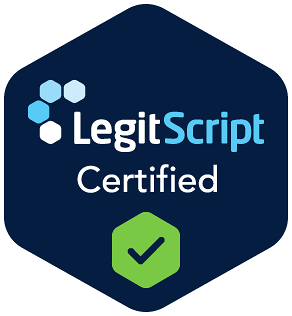They sound the same. Indeed the are nearly the same. However, there are a couple of differences that are easy enough to identify. This will keep you informed when making decisions in a doctor’s office. Or it can give you insight on what you or a loved one have already been prescribed. But one thing is important to remember, both oxycodone and OxyContin are part of the opioid family of painkillers. As such, they are both addictive and should only be used in accordance to a doctor’s instructions.
Let’s Start With Oxycodone
Oxycodone is a semi-synthetic opioid derived from opium. Drug manufacturers use a naturally-occurring substance in opium called thebaine to make oxycodone. Thebaine is readily converted to oxycodone through a series of chemical reactions. Oxycodone can also be prepared from codeine, but the process is far more complicated.
Oxycodone is prescribed to relieve pain. It’s highly effective, but it’s also highly addictive. A good portion of the time, people who take it as prescribed, especially for short periods of time, do not become addicted. And it can be used to successfully manage many types of pain.
However, it’s also true that up to one-quarter of patients taking prescribed oxycodone over a longer period of time will become addicted to the medication. Once addicted and an opioid use disorder is diagnosed, oxycodone (or any other opioid) will become the highest priority in their lives.
Oxycodone causes euphoria in some individuals. These are the same people most at risk for addiction because they may seek out the euphoric effect over and over, rather than limiting its use to pain management.
Oxycodone and OxyContin
OxyContin, sometimes colloquially and incorrectly spelled as Oxycottin, is the brand name for a certain type of oxycodone.
What’s the difference?
- Oxycodone: Immediate release, lasts 4-6 hours. An opiate.
- OxyContin: Brand name. Time lapse release, lasts up to 12 hours. Contains oxycodone.
Oxycodone normally lasts anywhere from four to six hours, at the most, depending upon individual response. Oxycodone, like most opioids, isn’t particularly long-lasting.
OxyContin, manufactured by Purdue, is a long-acting form of oxycodone. That’s the only difference. OxyContin is formulated to last up to 12 hours on a single dose. It doesn’t actually last 12 hours for many people, but it certainly lasts a lot longer than the immediate-release forms do.
In 2012, Purdue changed its OxyContin formulation to make it tamper-proof. The current formula contains a special type of polymer that turns into a gel resembling egg white when it comes into contact with water. It’s virtually impossible to crush the tablet.
However, the drug is still highly abusable even when taken by mouth as intended.
Are You Addicted to Oxycodone or OxyContin?
If you or a loved one are in the situation where the drugs you were prescribed have taken over your life, there is good chance an addiction is at play. The effects of opioid addiction are devastating and the possibility of overdose is frightening. If you believe you might be addicted (or know someone who is), please call us today. Recovery is possible, but you need help from a qualified recovery treatment center starting with a high-quality oxycodone detox.
To talk to one of our addiction specialists today and get the answers you need, call us now: 888-590-0777.





